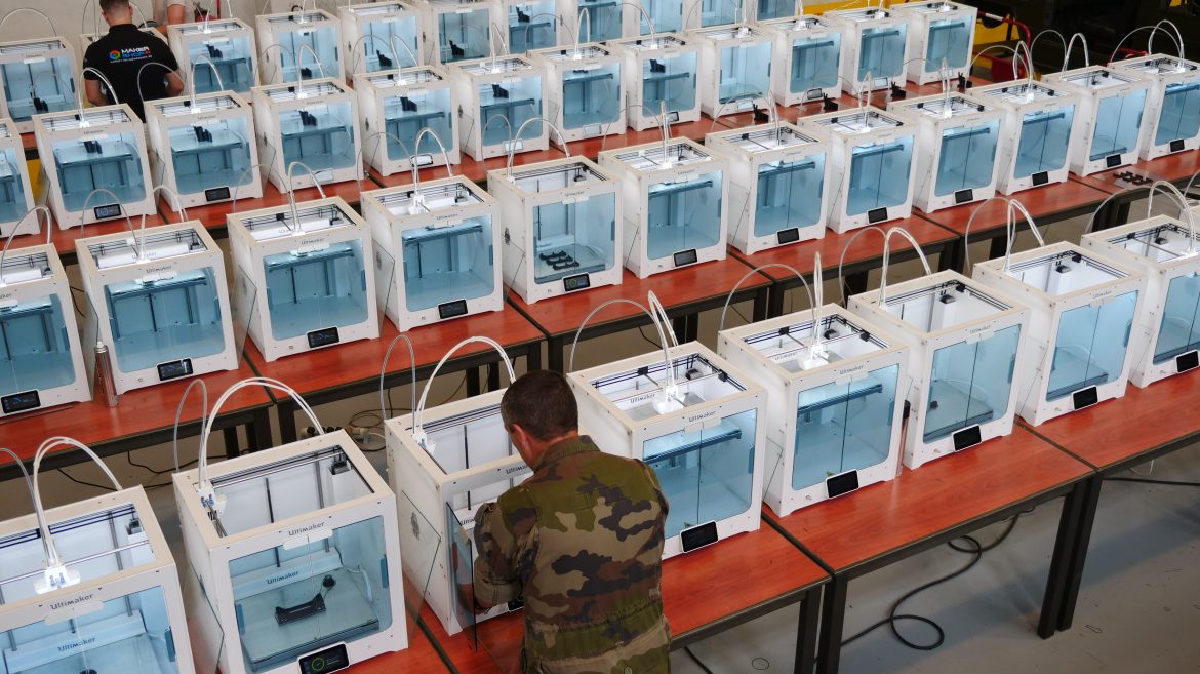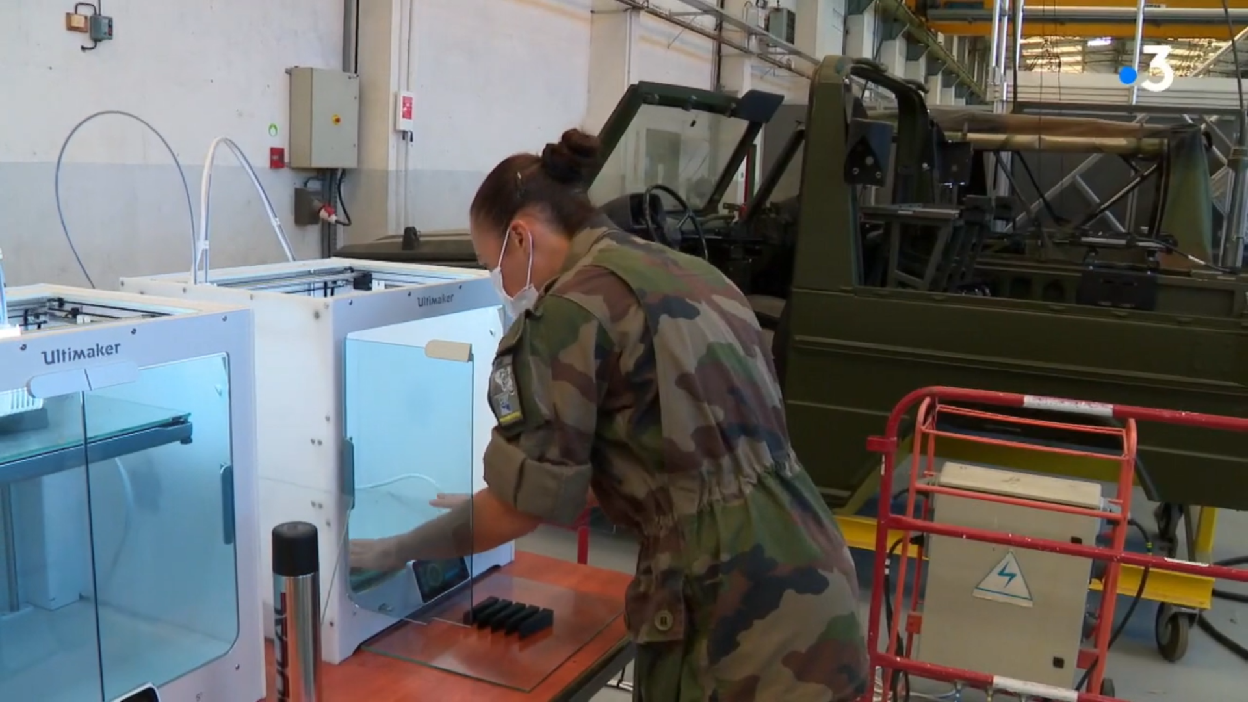The French Army has recently partnered with HAVA3D, a prominent distributor and integrator of additive manufacturing solutions based out of Le Mans, France, to deploy one of the largest 3D printing military farms in Europe, for the purpose of part production.
A fleet of 50 3D desktop printers have been setup at Bourges for the Ecole Militaires de Bourges (EMB), a military unit which specializes in materials and logistics training. The printer farm was installed in April this year, as part of the COVID-19 crisis, and was tested for reliability and efficiency for military production requirements. The pandemic had shut down or strained normal supply routes, particularly in international military operations, so active duty parts were the focus for development for field repair and servicing of systems or vehicles. Explaining their approach, French Army General Philippe Baldi (Commandant des Ecoles militaires de Bourges) mentioned how production had shifted to make parts to repair systems or vehicles on external operations, which is why the army decided to acquire the capability to rapidly mass produce parts for the maintenance of these vehicles.
This shift was largely accelerated by the impact of the pandemic, with suppliers to the army shutdown or running at reduced capacity due to the crisis—forcing the army to adapt, in part by training its personnel in applying 3D printing for on-going operations in Mali and Lebanon, where equipment or materials are impacted by extreme environmental conditions. This not only provides the army with flexibility to manage blocks in their supply chain, especially to remote locations, and reduce costs in development or transportation. In June last year, the French army also procured and integrated two Prodways industrial 3D printers, the ProMaker P1000, for use in manufacturing high-performance plastic parts for real-world military use.
3D printing also provides an efficient solution to extending the operational lifetime of legacy equipment, for which spare parts are difficult to obtain, and to lightweight existing equipment using composite materials. The French army has already used professional 3D printers to produce protective shells, seals and optical parts, and various other pats such as vehicle ignition buttons. As one soldier explained,
“It’s a great tool to solve problems quickly. If we take the example of an ignition button for a P4 vehicle, it is obvious. Instead of having to order a part, immobilize the vehicle for several days and change a entire power system, I make a replica with the 3D printer in a few minutes, the part is changed and the vehicle is back up and running.”
HAVA3D’s collaboration with the French army began in February, 2019, when the company organized a Hackathon Mili3D, for soldiers to experiment with 3D printing. More than 50 applications were created at the hackathon by participants, validating the immediate relevance of additive manufacturing for the military. The company provided technical support to military personnel, and since more than 40,000 parts have been 3D printed for the French Armed forces. In the second half of last year, the company had already assisted the French army in testing the same 3D printer for use at remote-bases in Mali, Niger and Lebanon.
Ultimaker S5 3D printers were supplied by HAVA3D with materials such as BASF Ultrafuse PAHT CF15 used for their extreme mechanical properties to make parts, including a thermal camera support leg. Stanislas Clicquot, CEO of HAVA3D, said,
“We proposed a professional printer model: the Ultimaker S5. Powerful, reliable, versatile and intuitive, it allows you to respond quickly and efficiently to crisis management with centralized production . This solution can also be easily deployed within the various regiments and allow a distributed mode of production for more reactivity and agility within the army.”
It is quite evident that COVID-19 has accelerated the deployment of 3D printing applications not just in healthcare, but in the military as well. Along with the French army, which has been collaborating with HAVA3D and Prodways, other national armies have also implemented 3D printing for direct or spare part production including the US Army, Australian Army, the Dutch Army, and the British Army.
Subscribe to Our Email Newsletter
Stay up-to-date on all the latest news from the 3D printing industry and receive information and offers from third party vendors.
Print Services
Upload your 3D Models and get them printed quickly and efficiently.
You May Also Like
Air Force Awards 3D Systems $7.65M Contract to Continue Work on Large Format Metal 3D Printer
Back in September 2023, the U.S. Air Force Research Laboratory (AFRL) awarded 3D Systems a contract worth nearly $11 million to develop a large-format metal additive manufacturing (AM) demonstrator, a...
Printing Money Episode 31: AM Deals and Analysis with Fabian Alefeld, EOS
Printing Money Episode 31 is here! Danny’s guest for this episode is Fabian Alefeld (Director Business Development & Academy, Global Additive Minds | EOS North America, and Podcast Host, Additive...
University of Arizona Awarded $5 Million U.S. Army Grant to Speed Up Hypersonic Manufacturing
The Mach-X engineering team at the University of Arizona is working to make hypersonic vehicles faster and more affordable. Now, they’ve received a $5 million grant from the U.S. Army...
EOS & NASA Sign Agreement to Accelerate Space 3D Printing Workforce Development
If there’s one major issue in the manufacturing sector that can be expected to persist well into the future, it’s workforce development. This is especially true in nations like the...

































